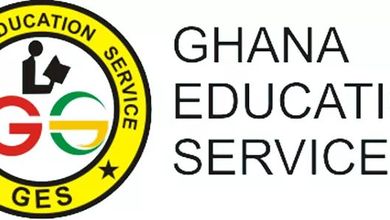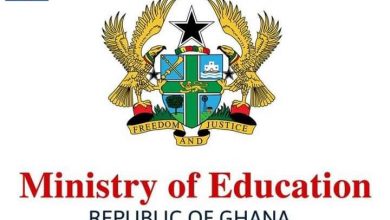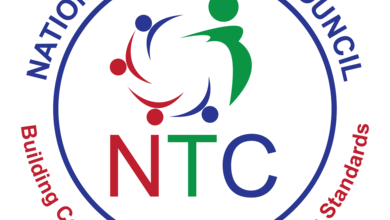NTC CONTENT AREAS FOR SHS PEDAGOGY 2024
NTC CONTENT AREAS FOR SHS PEDAGOGY
CONTENT AREAS FOR SHS PEDAGOGY
NTC Pedagogy Questions and Answers pdf
| Content Areas | Competencies | Descri | ptive Statement | |
| 1 | The concepts – methodology, pedagogy, andragogy
| 1. Demonstrate knowledge and understanding of the concept of pedagogy and provide examples
| 1. 2. 3. | Differential between the concepts pedagogy and andragogy. Identify the various types of pedagogy. Explain how the various pedagogical examples (E,g. Discussion) can be applied in the classroom. |
| 2 | 2. Secondary (JHS/SHS) Pedagogy examples
| Demonstrate knowledge and understanding of methods appropriate for teaching in the Secondary school, e.g. discussion, lecture, think-pair-share, group/pair work. demonstration, simulation, etc)., and factors to consider in selecting a pedagogy/method, topic, students’ characteristics, class environment – class size, instructional materials available etc.) | 1. 2. 3. | Identify methods/pedagogy appropriate for teaching at the Secondary school Discuss the tenets of each of the methods, their advantages and disadvantages Identify factors to consider in selecting a pedagogy/method for teaching secondary (JHS & SHS) level. |
| 4. | Illustrate how these methods can be used in the secondary classroom | |||
| 3 | Curriculum/syllabus – concept, nature and evaluation | 1. Demonstrate knowledge and understanding of the concept, nature and evaluation of the secondary (JHS & SHS) school curriculum | 1. 2. 3. | Explain the concept of curriculum. Explain the types and characteristics of curriculum. Discuss the stages of curriculum development |
| 4. | Identify and discuss the characteristics of the Secondary school curriculum | |||
| 5.
| Identify deficiencies, if any, in the secondary school (JHS & SHS) curriculum |
| 4 | 4. Scheme of work/Learning Scheme – Factors to consider when designing the learning scheme – Sequencing topics | 1.
| Demonstrate knowledge and understanding of scheme of work | 1. Define the concept, scheme of work. 2. Identify the major components of a scheme of work. 3. Identify and discuss the factors to consider when designing a scheme of work. 4. Examine ways of sequencing topics in the scheme of work. 5. Design a scheme of work for a given subject area
| |
| 5 | Lesson Plan (Why design a lesson plan, Factors to consider when designing a lesson plan, Components of lesson plan, Writing learning outcomes, indicators/objectives | 1. | Demonstrate knowledge and understanding of lesson plan design and its preparation processes
| 1. 2. 3. 4. 5. 6. | Explain the concept ” lesson plan” Explain the importance of designing a lesson plan. Examine the factors to consider when designing a lesson plan. Discuss the major components of a lesson plan. Write appropriate learning outcomes and indicators for a lesson. Design a lesson plan for a given lesson |
| 6 | 6. Core and transferable skills (21st Century Skills) | 1. Demonstrate knowledge and understanding of the various core and transferable skills and their application in the Secondary Classroom | 1. Identify the 21st century skills in teaching. 2. Explain the various 21st century skills in teaching. 3. Use appropriate pedagogy to achieve the various 21st century skills in teaching.
| ||
| 7 | Classroom Management | 1. Demonstrate knowledge, understand and use effective classroom management practices to enhance teaching and learning at the secondary (JHS and SHS) school level
| 1. Identify techniques and strategies for classroom management. 2. Determine various ways of arranging the classroom for effective lesson delivery. 3. Use time effectively in the delivery of lesson. 4. Use appropriate techniques/strategies to manage large classes effectively. | ||
| 8 | Questioning | Demonstrate knowledge, understanding and use appropriate questioning skills in lesson delivery | 1. 2. | Identify the types of questions used in teaching. Identify the various questioning skills used in teaching. | |
| 3. | Use the various question levels in the lesson delivery. | ||||
| 9 | Instructional Resources including ICT | Demonstrate knowledge and understanding of preparing, using and evaluating instructional resources
| 1. 2. | Explain, with examples, the concept of instructional resources. Classify instructional resources based on specified criteria. | |
| 3. | Identify factors essential in the selection and use of instructional resources. | ||||
| 4. | Identify ways that ICT tools can be used to enhance Teaching and learning in the classroom | ||||
| 5. | Prepare and use instructional resources in lesson delivery. | ||||
| 6. | Evaluate the effectiveness of an instructional resource in lesson delivery.
| ||||
| 10 | Assessment (writing effective test items and scoring) | 1. Demonstrate knowledge and understanding of classroom assessment and its effective use in the Secondary School. . | 1. 2. 3. 4. 5. | Identify the rationale for classroom assessment. Identify the various forms of classroom assessment. Write effective/appropriate test items. Identify various ways of scoring a test. Analyse and use test scores to make meaningful
| |
PEDAGOGY CONTENT FOR SECONDARY (JHS/SHS) EDUCATION
Table of Specification for 100 multiple-choice questions
| S/N | Topic | Level of Question | ||||
| L1 | L2 | L3 | L4 | Total | ||
| 1. | The concept of pedagogy for Secondary (JHS & SHS) level • The art and science of teaching • Difference between pedagogy and andragogy • Heutagogy (self-determined learning) | 1 | 1 | 1 | 1 | 4 |
| 2. | Pedagogy/Methodology • Types of pedagogy/methods. • Factors to consider in selecting a pedagogy/method for teaching secondary (JHS & SHS) level • General method of teaching (Eg. Expository and discovery, activity-oriented, project and problem solving, fieldwork, deductive and inductive, etc) • Application of approach, methods and techniques of pedagogy • The teaching-learning environment | 1
| 2 | 3 | 3 | 9 |
| 3. | The concept, nature and evaluation of the secondary (JHS & SHS) school curriculum • The concept of curriculum. • The components of a curriculum • Types and characteristics of curriculum • General principles of curriculum • Deficiencies, if any, in the secondary school (JHS & SHS) curriculum • The relationship between teaching, learning and curriculum • Professional skills and characteristics of a good teacher | 2 | 3 | 3 | 3 | 11 |
| 4. | Scheme of work • The meaning of scheme of work • Major components of a scheme of work • Factors to consider when designing a scheme of work • Ways of sequencing topics in the scheme of work | 1 | 2 | 3 | 3 | 9 |
| 5. | Lesson plan design and its preparation processes • Rationale for designing a lesson plan • Key factors to consider when designing a lesson plan • Essential components of a lesson plan | 1 | 3 | 3 | 3 | 10 |
| • Writing appropriate learning outcomes and indicators for a lesson • Essential teaching skills in lesson development • Ending a lesson or closure • Lesson evaluation | ||||||
| 6. | Core and transferable skills (21st century skills) and their application in teaching • Core and transferable skills (21st century skills) in teaching • Using appropriate pedagogy to achieve the various 21st century skills in teaching • Assessment of the core and transferable skills | 1 | 2 | 2 | 2 | 7 |
| 7. | Classroom management skills and practices • The teacher as a classroom manager • Managing the physical and social environment of the classroom • Techniques and strategies for classroom management • Ways of arranging the classroom for effective lesson delivery • Maintaining discipline in the classroom • Effective use of time in the delivery of lesson (managing instructional time) • Using appropriate techniques/strategies to manage large classes effectively • Managing post-instructional activities | 2 | 2 | 4 | 4 | 12 |
| 8. | The art of questioning and error correction skills in lesson delivery • Types of questions used in teaching • Questioning skills used in teaching (kinds of questions, effective questions, how are probes used and how to question etc.) • Various question levels in lesson delivery • Planned repetition, drill and recitation (rhymes) • Use of examples and illustrations • What, when and how to correct error | 1 | 3 | 3 | 3 | 10 |
| 9. | Preparing and using instructional resources • Meaning and importance of instructional resources • Classification of instructional resources based on specified criteria • Factors essential in the selection of instructional resources • Using ICT tools to enhance teaching and learning in the classroom • Preparation and usage of instructional resources in lesson delivery • Evaluation of instructional resource effectiveness in lesson delivery | 2 | 3 | 3 | 3 | 11 |
| 10. | Classroom assessment and its effective use • Rationale for classroom assessment • Forms of classroom assessment • Writing effective/appropriate test items • Ways of scoring a test • Analyses and use of test scores in decision making • Alternative assessment | 2 | 3 | 3 | 3 | 11 |
| 11. | Inclusivity and GESI issues • Knowledge of GESI issues • Integrating GESI issues | 1 | 1 | 2 | 2 | 6 |
| Total | 15 | 25 | 30 | 30 | 100 | |
| Per cent (%) | 15.0 | 25.0 | 30.0 | 30.0 | 100 |






